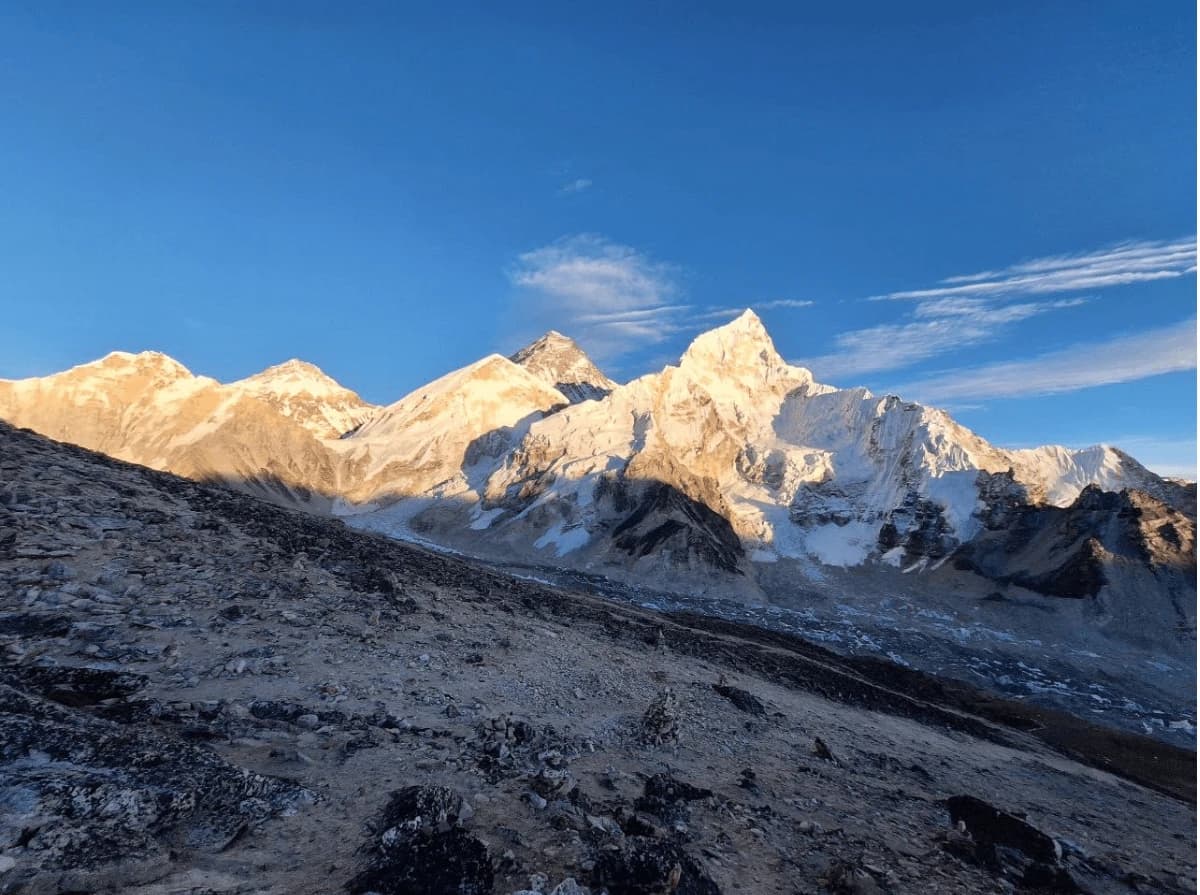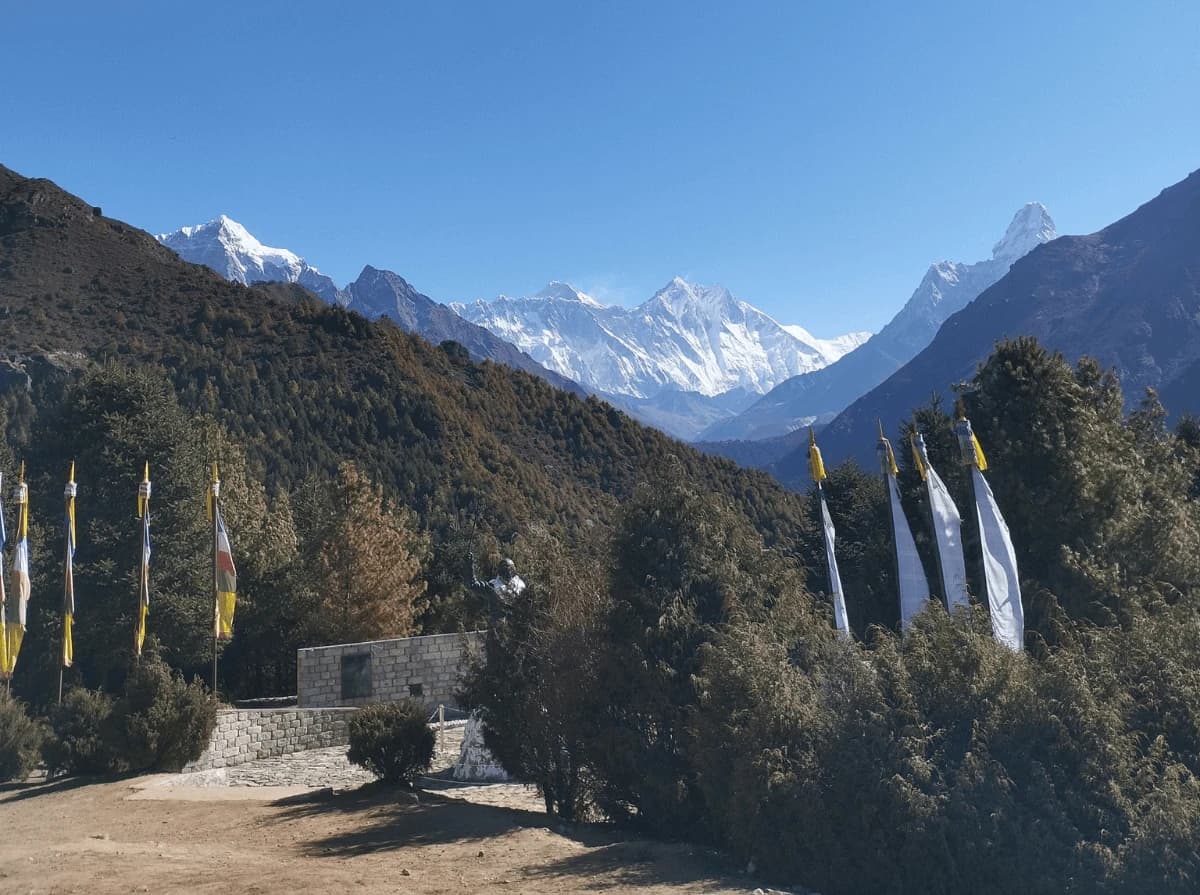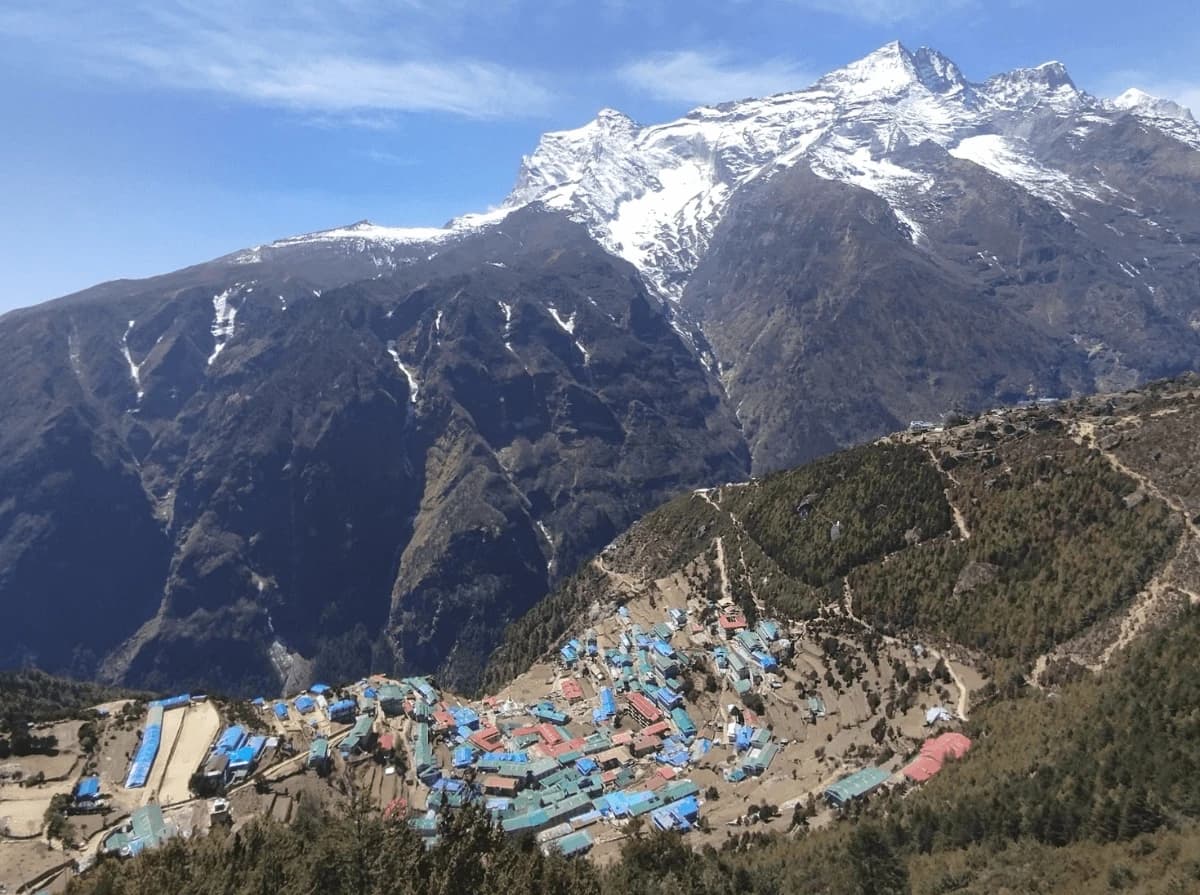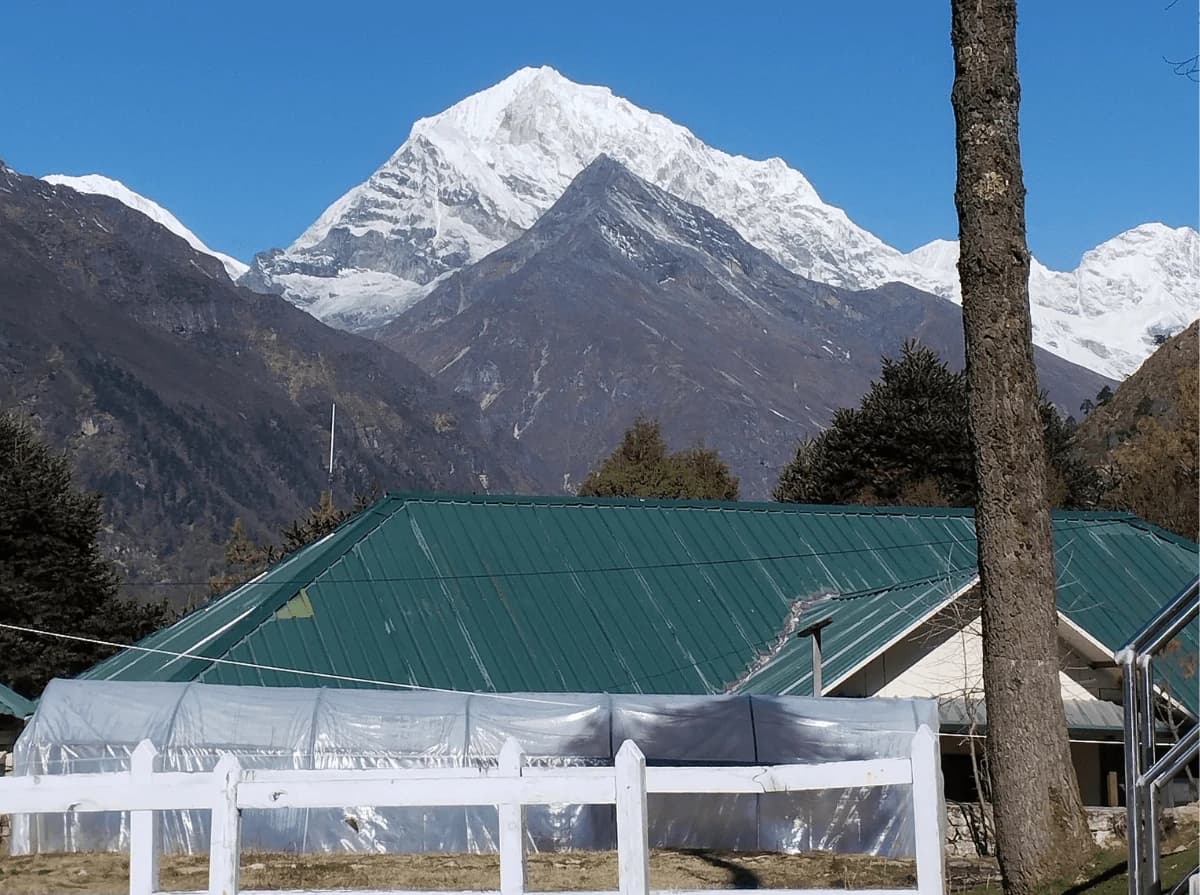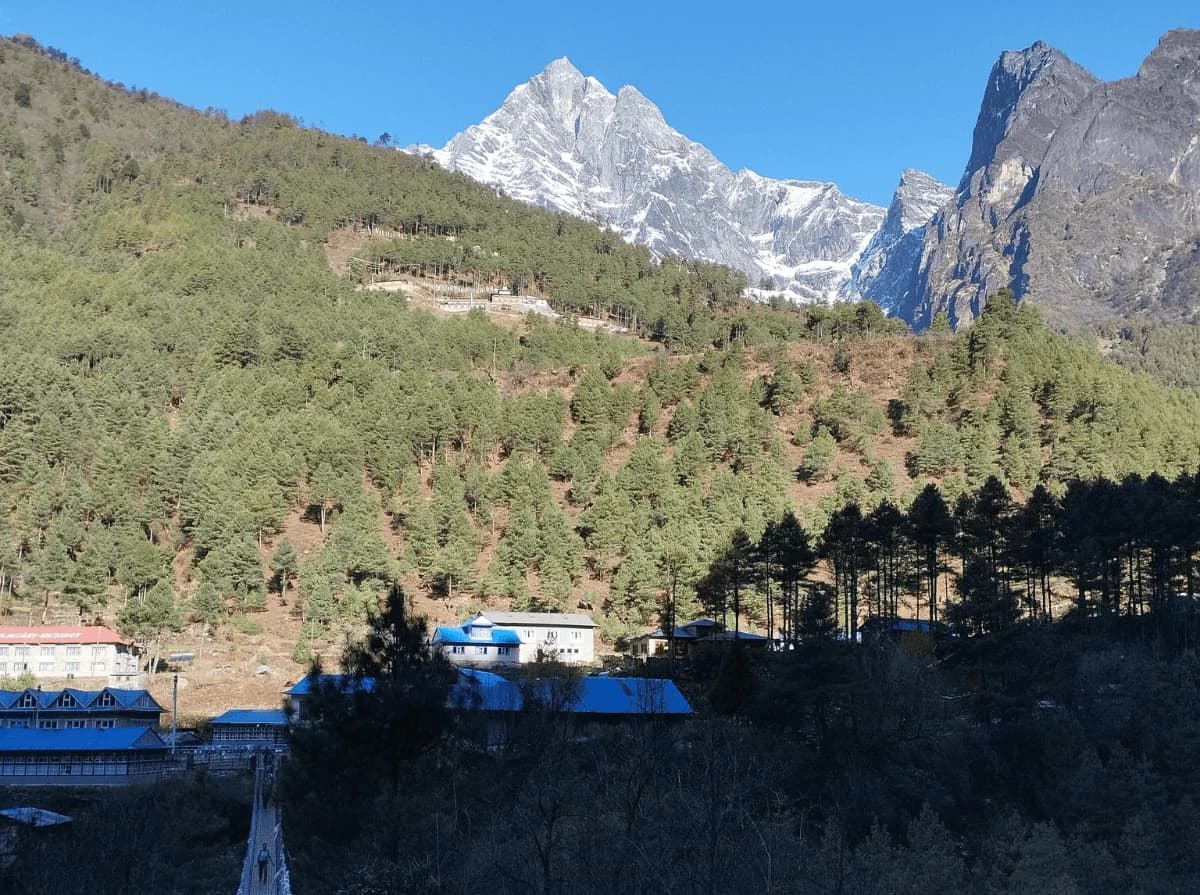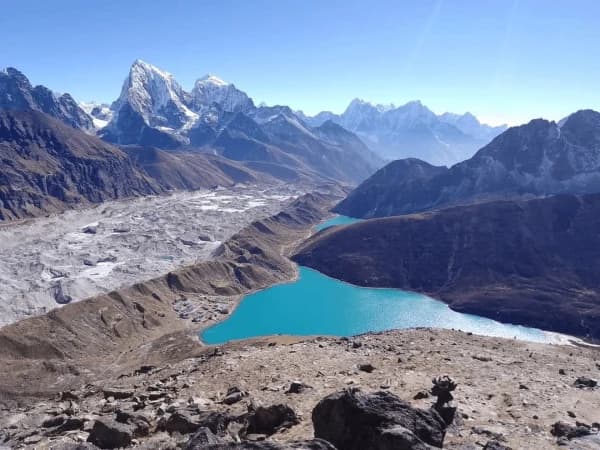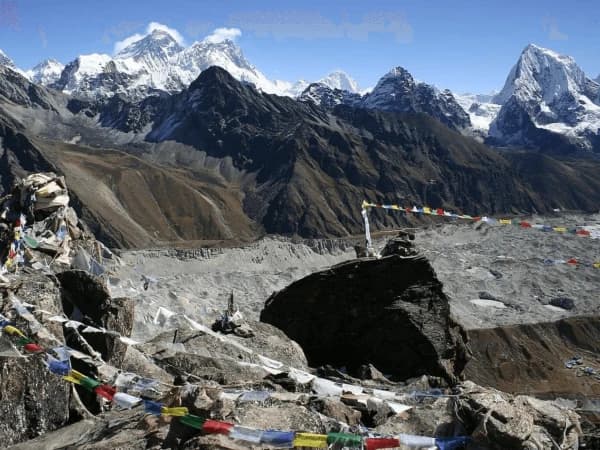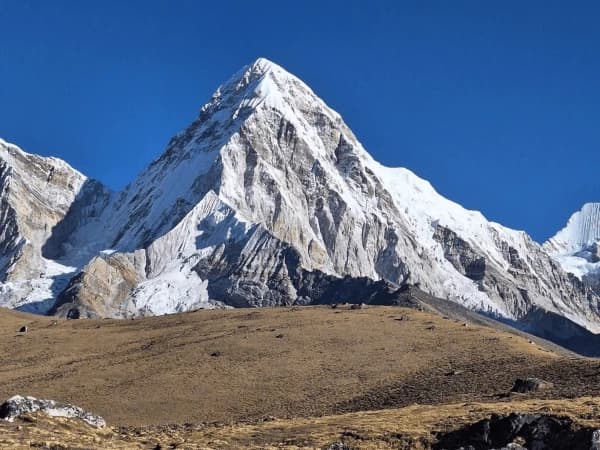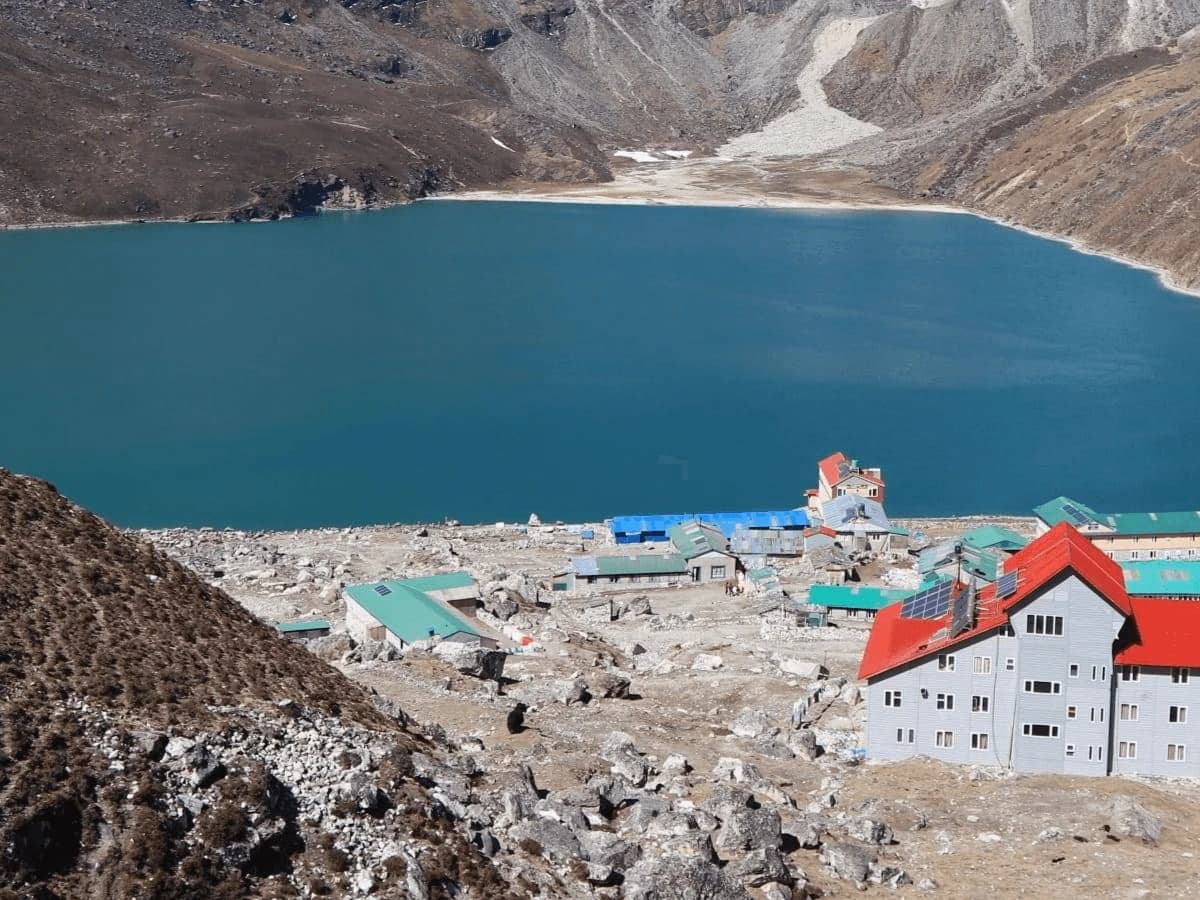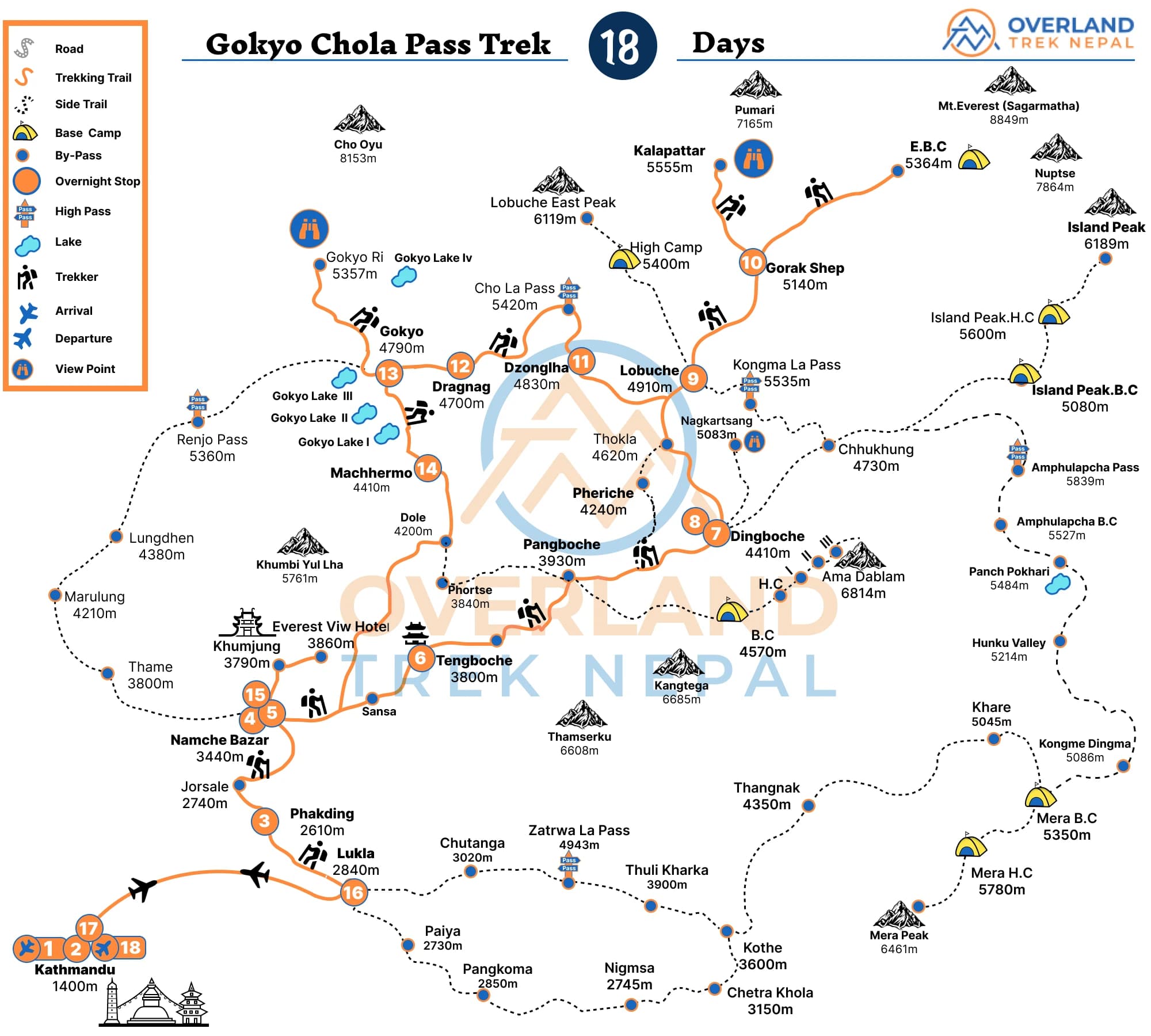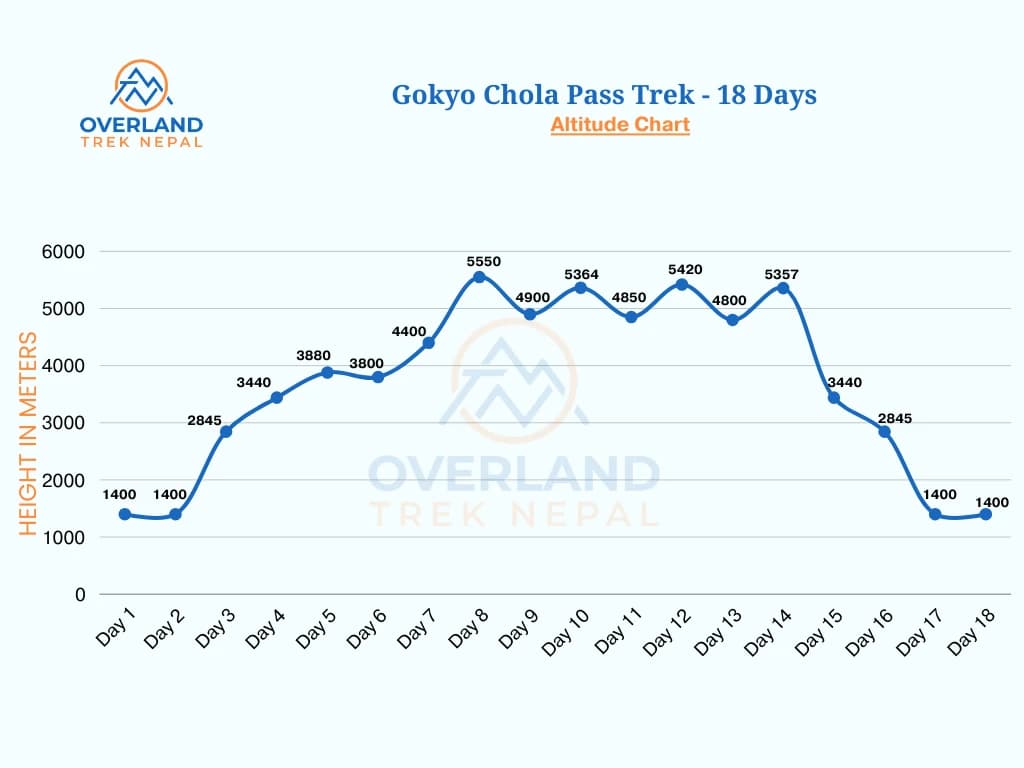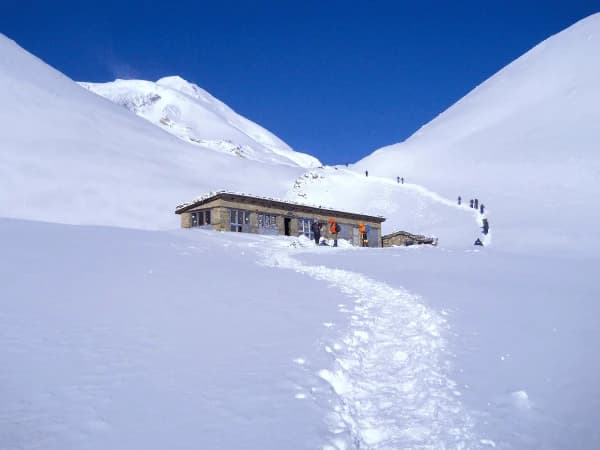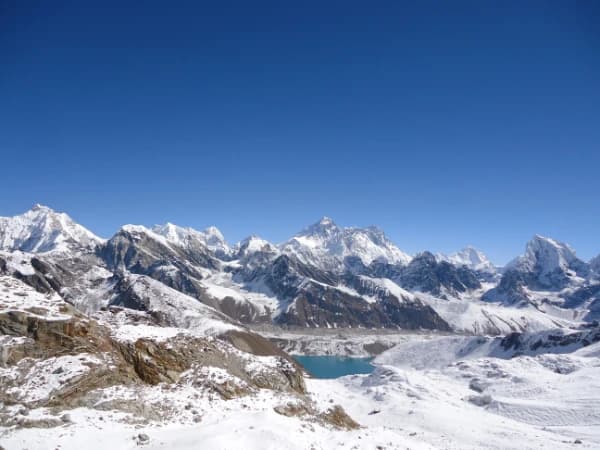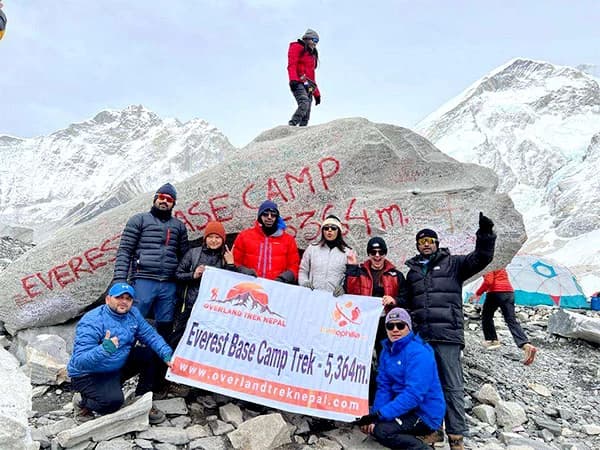Key Highlights of Gokyo Valley and Chola Pass.
- Kick off your adventure with an epic flight from Kathmandu to Lukla, the world’s most exciting mountain airstrip.
- Hike to the stunning Gokyo Lakes and climb Gokyo Ri for jaw-dropping Everest views.
- Take on this high-altitude & challenging Cho La Pass with glaciers, rugged terrain, and unbeatable scenery.
- Stand at the foot of the world’s highest peak and catch a legendary sunrise over Everest from the Kala Patthar Hike.
- Soak in the vibrant mountain culture, monasteries, warm Sherpa hospitality, and tranquil villages like Namche Bazaar.
Overview of the Dream Adventure to the Gokyo Lake via Chola Pass
The Gokyo Chola Pass Trek is a thrilling journey through the popular Everest Region Trekking Route. It is an ideal trip that combines the classic Everest Base Camp Trek and the Gokyo Valley Trek. This venture is full of adventure and leads you through the iconic Everest Base Camp, the stirring Cho La Pass (5420m), and pristine Gokyo Lakes. The journey is challenging but rewarding with glacial moraines, snowcapped peaks, Glaciers, Sherpa Villages, Monasteries, and wildlife that make this destination popular among the nomads. Overall, this challenging trek combines the serene beauty of Gokyo Valley with the thrill of crossing the high-altitude Cho La Pass (5,420m), leading you to the iconic Everest Base Camp.
This trek spans 15-18 days, challenging even seasoned trekkers with high-altitude crossings, steep ascents, and rugged terrain. It is considered moderately difficult, requiring good physical fitness and acclimatization to handle elevations above 5,000m. With its blend of adventure, breathtaking landscapes, and rich culture, the Gokyo Chola Pass Trek is a must-do for trekkers seeking a thrilling Himalayan experience. Whether you’re an experienced hiker or an ambitious adventurer, this trek promises memories that last a lifetime.
Are you an adventure seeker craving an unforgettable trek in the heart of the Himalayas? Then this excursion of the Gokyo Valley with Chola Pass is your ultimate gateway to breathtaking landscapes, pristine alpine lakes, and the majestic Everest region. This challenging trek combines the serene beauty of Gokyo Valley with the thrill of crossing the high-altitude Cho La Pass (5,420m), leading you to the iconic Everest Base Camp (EBC).
Why should you do the Gokyo Trek via EBC and Cho La Pass?
Well, the Khumbu Region is probably any traveler's first choice to witness the world's highest peak with the naked eye. However, embarking on this action-packed route through the EBC, Chola Pass, and Gokyo Valley is the ultimate adventure into the Himalayas.
Explore Everest Base Camp & Kala Patthar
One of the reasons for doing the Gokyo Cho La Pass Trek is the chance to hike to Everest Base Camp. During this excursion, trekkers will initially visit Everest Base Camp at 5364 m. At first, the trip follows the regular EBC Trek Route, which includes acclimatization at Namche Bazaar and Dingboche. All wanderers dream of reaching the foothills of Mt. Everest. This venture is an excellent opportunity to taste the Everest Base Camp. A short hike to Kala Patthar (5,545m) provides jaw-dropping close-up views of Everest and its neighboring giants.
Challenge yourself through the Exhilarating Cho La Pass.
The exhilarating Cho La Pass lies between the EBC Trek route and Gokyo Valley. One must cross this strenuous Pass to reach Gokyo Valley from the EBC. Crossing this pass is like climbing some mountains. The trail of Cho La Pass is often covered by white snow and needs to be guided carefully by an experienced trekking guide from Nepal. You can admire splendid views of Mt. Ama Dablam, Pumori, Lobuche, Cholatse, etc. from the top of this pass. Trekkers will navigate icy terrain and steep ascents, making it an exhilarating experience for thrill-seekers.
Discover Gokyo Valley, Turquoise Lakes, and Hike to Gokyo Ri
Gokyo Valley is one of the most scenic places in the Everest Region, which offers dazzling views of mountains from Gokyo Ri and turquoise lakes. These sacred lakes add a magical charm to the trek, offering surreal reflections of the surrounding snow-capped peaks. The valley itself, with the pristine lakes, naturally redecorates this place. There are 5 lakes connected, holding spiritual values. Likewise, those who visit Gokyo Lake treks can only hike to Gokyo Ri to witness the views of Mt. Cho Oyu, Mt. Makalu, Mt. Everest, and many more.
Everest Three High Pass Trek or Gokyo Chola Pass Trek
Honestly, many travelers get confused between the Three High Pass and the Gokyo Chola Pass. The Everest Three High Pass Trek covers the whole loop of the Khumbu Region, including EBC, Kongma La Pass, Cho La Pass, and Renjo La Pass, along with Gokyo Valley. However, the Gokyo Valley Chola Pass Trekking Route will omit the Kong Ma La Pass and Renjo La Pass. Trekking through the three high passes is more difficult than doing the Cho La Pass Trek. However, both excursions cover Everest Base Camp and Gokyo Valley.
Best route for Gokyo Cho La Pass Trek, Khumbu Region
The route starts from Lukla, Tenzing Hillary Airport, following the path of the Dudh Koshi River. Then, the trip continues through several Sherpa Settlements like Phakding, Namche, Dingboche, Lobuche, Gorakshep, and finally EBC. Also, you will often hike through the Sagarmatha National Park during the journey. After discovering the iconic EBC, the trail will move ahead to the northwest, approaching Cho La Pass and Gokyo Valley. The pathway to Cho La Pass can be challenging and at the same time rewarding as well with the views of glaciers and mountains. Then, from Gokyo Valley, the route will move ahead to Lukla, via Dole and Namche.
Cost of the Gokyo Chola Pass Trek
The cost of the trek varies depending on the service level, but on average, it ranges between $1,500 and $2,500 per person. This includes permits, accommodation, meals, guide & porter services, and domestic flights. Personal expenses, travel insurance, and tips for guides/porters are not included in the trekking package.
Why should you book your trip to Gokyo via Cho La Pass with us?
Planning to take on the Gokyo Cho La Pass Trek? Let us make it the adventure of a lifetime! Here’s why trekkers trust Overland Trek Nepal:
- We Know These Trails Like Home – With over a decade of experience, our expert local guides don’t just lead the way—they bring the mountains to life with stories, insights, and a deep connection to the land.
- Your Safety is Our Priority – High-altitude trekking comes with challenges, but we’ve got your back. From proper acclimatization plans to first-aid-trained guides, we make sure you trek with confidence.
- Small Groups, Big Experiences – No overcrowded tours here. We keep our groups small for a more personalized, flexible, and immersive adventure.
- No Hidden Costs, No Hassle – We handle everything—permits, logistics, comfortable teahouse stays, and good meals—so you just focus on enjoying the trek.
- More Than Just a Trek—A Cultural Experience – We take you beyond the trails, introducing you to warm Sherpa hospitality, ancient monasteries, and local traditions that make this journey even more special.
- Benefits & Compliments - Company’s Duffel Bag, T-shirt, Caps, an hour Trekking Massage after the trip, Certificate, and many more.
This is more than just a trek; it’s an experience you’ll never forget. Ready to make it happen? Let’s plan your adventure today. Feel free to contact us via email or WhatsApp at +9779851138871.
